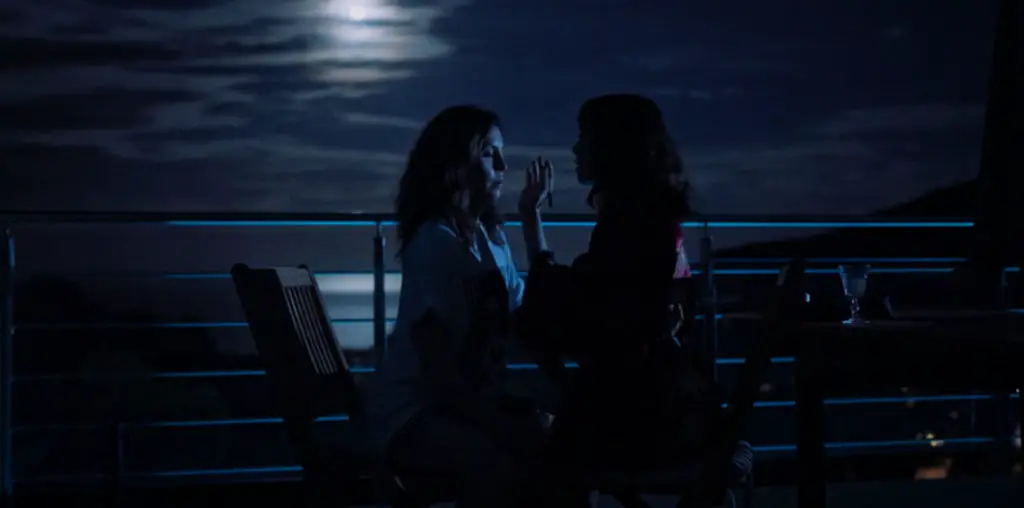
In some ways, Mr. Fox reminds me of another character from a Wes Anderson movie, Royal Tenenbaum. While both characters’ family lives are very different, the similarity lies in their mutual inability to escape the poor behavior in their pasts and build new lives for themselves. That struggle provides the narrative thrust for both films.
In “Fantastic Mr. Fox,” the title character (voiced by George Clooney) gave up the life of a chicken thief to become a newspaper columnist, but he returns to his previous ways when he hits a mid-life crisis and decides he needs to pull off one last big score to provide for his family. That heist involves stealing chickens from three notorious chicken farmers, Boggs, Bunce, and Bean.
Unsurprisingly, Mr. Fox’s scheme does not go as planned, and soon he, his family, and his friends find themselves trapped underground as the three farmers attack them from above with heavy machinery and explosives. As they say, crisis reveals character, and our protagonists must summon the best in themselves to prevail. While most of Wes Anderson’s films aren’t kid-friendly, “Fantastic Mr. Fox” is the kind of movie that kids and their parents can enjoy.
I don’t have the original DVD release of this film, so I’m not sure how much was ported over to this edition. All of the content is on two DVDs as well as one Blu-ray, a trend that Criterion has embraced recently, which I appreciate. All too often the big studio releases put out their DVD+Blu-ray sets with nothing but the film on the DVD and all the good bonus stuff on the Blu-ray.
The bonus features lead off with Wes Anderson’s commentary track. Like his other commentaries, it’s a fun listen, delving into “how we did this” nuts-and-bolts filmmaking stuff, how the project came together, his lifelong love of Roald Dahl’s books, and plenty of trivia, such as the fact that the helicopter is the same one used in the “Magnum PI” TV series. “No one said we couldn’t use it,” Anderson observes in his typical dry style.
The rest of the bonus features are a smorgasbord of content, so I’ll just list them here:
- An animatic version of the film. If you’re familiar with Pixar’s development process, this is a lot like that, except it uses the cast’s voices and the music and sound effects, rather than rough temp tracks for the audio.
- “The Making of ‘Fantastic Mr. Fox,'” a series of featurettes that cover: dialogue recording; puppet animation tests; art department materials; a visit to the studio in London, including a news story about a World War II era bomb that was discovered on the premises and safely detonated on the first day of production; time-lapse photography of the five weeks it took to film the mine shot; behind-the-scenes footage of the music recording; and an overview the cool miniature objects created for the sets. One interesting observation: The actors were recorded in actual environments, such as fields, chicken houses, and so forth, rather than in the usual studio.
- A nearly hour-long audio recording of Roald Dahl reading his book, “The Fantastic Mr. Fox.”
- Footage of Wes Anderson accepting a special achievement award as his character from the film, along with a similar clip for his potential victory speech if “Fantastic Mr. Fox” had won the Academy Award for best animated film. There’s also a third clip of Clooney, as Mr. Fox, issuing a press statement in response to the movie being nominated for said Academy Award.
- Set photography by Ray Lewis. (Nice to see he found another career after he retired from the NFL. Ha ha, I kid.)
- Six publicity featurettes: “Roald Dahl,” which discusses how the author’s personal life influenced Anderson’s adaptation, which he wrote while staying at Dahl’s Gipsy House (his widow appears in it quite a bit); “Adaptation,” which is self-explanatory; “Puppet Makers”; “The Cast” (if you’re curious, Dahl’s widow didn’t mind that Americans were cast in a story with very English sensibilities); “Designing the World”; and “Bill and the Badger,” which features Bill Murray discussing his character, who was originally going to have a Wisconsin accent.
- A Sony smartphone commercial made by the same team that did the stop-motion animation for the film.
- An 11-minute, high-minded-sounding discussion and analysis of the film with two kids.
- “Witch’s Tree,” an archival clip of Dahl sitting in a 500-year-old beech tree that was an inspiration for “Fantastic Mr. Fox.” He first told the story to his kids before he wrote the book. Shouldn’t all children have such a childhood?
- A gallery of photographs showing the pages from Dahl’s original 1968 manuscript for the book.
- “Fantastic Mr. Dahl,” an hour-long documentary about the author’s life. It’s a well-rounded portrait of a man who, like all of us, was capable of wonderful and not-so-wonderful things.
The set also includes the usual Criterion booklet. This one features a critical essay by author Erica Wagner, an article by Anderson about Gipsy House, a reproduction of the “White Cape” comic book used in the movie, and various behind-the-scenes photos.
